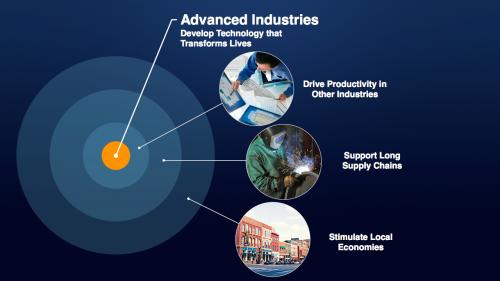The “manufacturing renaissance” storyline has gained genuine force lately.
Some contend that the nation’s bonanza of cheap natural gas has changed the game, making energy-intensive production affordable in America. Others, like Harold Sirkin and Michael Zinser at Boston Consulting Group, argue that the nation’s quiescent wage rates in comparison to China are making the U.S. relatively more attractive. Both camps make important points.
And yet, there is another input that may be just as important: software.
Software is ubiquitous in the modern manufacturing process and, according to recent data from PriceWaterhouseCoopers, the United States dominates the software industry. PriceWaterhouseCoopers data show nine of the top 10 grossing SaaS (Software-as-a-Service) firms in the world are American. That means (as Siemens Industry Sector CEO Helmuth Ludwig and Siemens USA President and CEO Eric Spiegel argue in a recent article) that the nation’s most formidable advantage in manufacturing may flow from its unquestioned dominance in software development and application. (Disclosure: Siemens is a funder of the Metro Program.)
In this vein, while today’s energy and wage edges are important, they may be transitory and likely do not represent a long-term American advantage. Software development, by contrast, is different. A quintessential American “advanced industry,” software design and deployment remains a key source of industrial superiority for the U.S.—by itself and as a driver of advanced manufacturing prowess.
What makes software so essential to next generation manufacturing? High-end manufacturing that remains in developed economies relies on seamless integration between digital competencies and production capabilities. These extremely technical, high-productivity industries demand real-time design iterations, extreme production efficiency, global quality control, and are extraordinary complex—which means that their management and execution entails deployment of super-intricate systems and massive datasets with cutting-edge software and sensors. Together, these factors are driving a fundamental—and favorable—shift in what matters for advanced manufacturing. No longer are energy and labor costs completely dominating global sourcing decisions. Instead, firms increasingly take pains to ensure that they have access to the most sophisticated software developers and technology. Fortunately for the U.S., those resources remain largely American. U.S. superiority on this front looks durable.
This is not to say that American superiority should be taken for granted. In fact, while America’s software edge appears undeniable, it is by no means future-proof. Other countries understand the importance of a dominant software industry and are moving to develop competence. Last year, for example, the government of South Korea launched a nationwide initiative to develop the “creative economy”—primarily comprised of science, software, and IT industries. The initiative is investing millions to support the country’s entrepreneurial software base—a traditional weakness of the Chaebol-run system—at each point of the value chain, from startup capital to export.
At the same time, many nations are moving aggressively to bolster their talent pipelines in computer science. Japanese students are required to take a 35-hour course in computer science and programming in order to graduate from high school. And according to a report by the British Royal Society, the IT skills of Finnish K-12 students are 15 percent more advanced than those of students in Massachusetts, the top U.S. state for computer science education. The United States, by contrast, is drifting in the opposite direction. Currently, less than 10 percent of U.S. schools offer computer programming classes. As a result, less than one-tenth of a percent of total Advanced Placement tests were in computer science in 2013—25 percent less than five years ago. Of the test takers, only 20 percent were women and 3 percent were black, meaning huge shares of American talent are not engaged in coding.
All of this is worrisome. It’s time for policymakers to take stock of what actually makes this country competitive and recognize that preparing the next generation of computer scientists and coders is a national economic imperative, akin to investing in infrastructure, competitive tax policy, or trade deals.









Commentary
Software: America’s Hidden Manufacturing Advantage
February 25, 2014